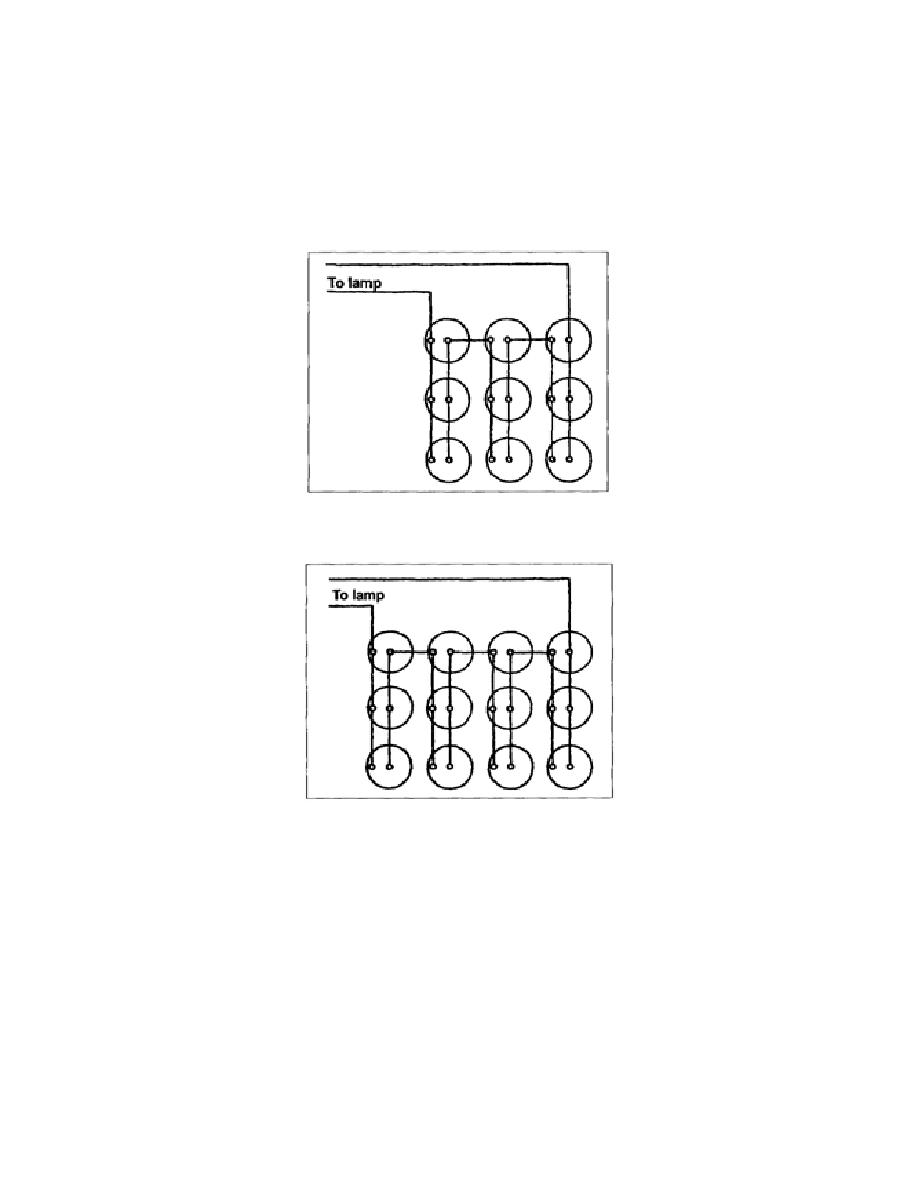
(5) After a period of use, the voltage supplied by the two units of three cells each decreases, and
the cells no longer furnish a satisfactory light. A third unit and later a fourth unit should be added
(Figures 2-14 and 2-15). When the four units no longer provide a sufficiently brilliant light, the two
oldest units should be removed and replaced. Be careful not to connect too many cells and provide more
voltage than the bulb can stand. After a period of rest, the removed cells may be used again with others
of about the same degree of exhaustion. Very weak cells should not be used in combination with new
ones.
Figure 2-14. Series-Parallel Connection of Nine Cells in Three Units of Three Cells Each
Figure 2-15. Series-Parallel Connection of Twelve Cells in Four Units of Three Cells Each
(6) Supply also furnishes a high-amperage bulb rated at 1.25 amperes and 3.7 volts. This bulb is
the same size as the 0.6-ampere bulbs and can be used with the same battery. It is to be used in cases
where the 0.6-ampere bulbs will not give a sufficiently powerful light. This bulb draws twice as much
current as the 0.6-ampere bulbs and should not be used where the other will be satisfactory. When cells
are new, two units connected in series should supply the 1.25-ampere bulb, with each unit consisting of
three or four cells connected in parallel. Extra units should be
2-41
EN0593



 Previous Page
Previous Page
